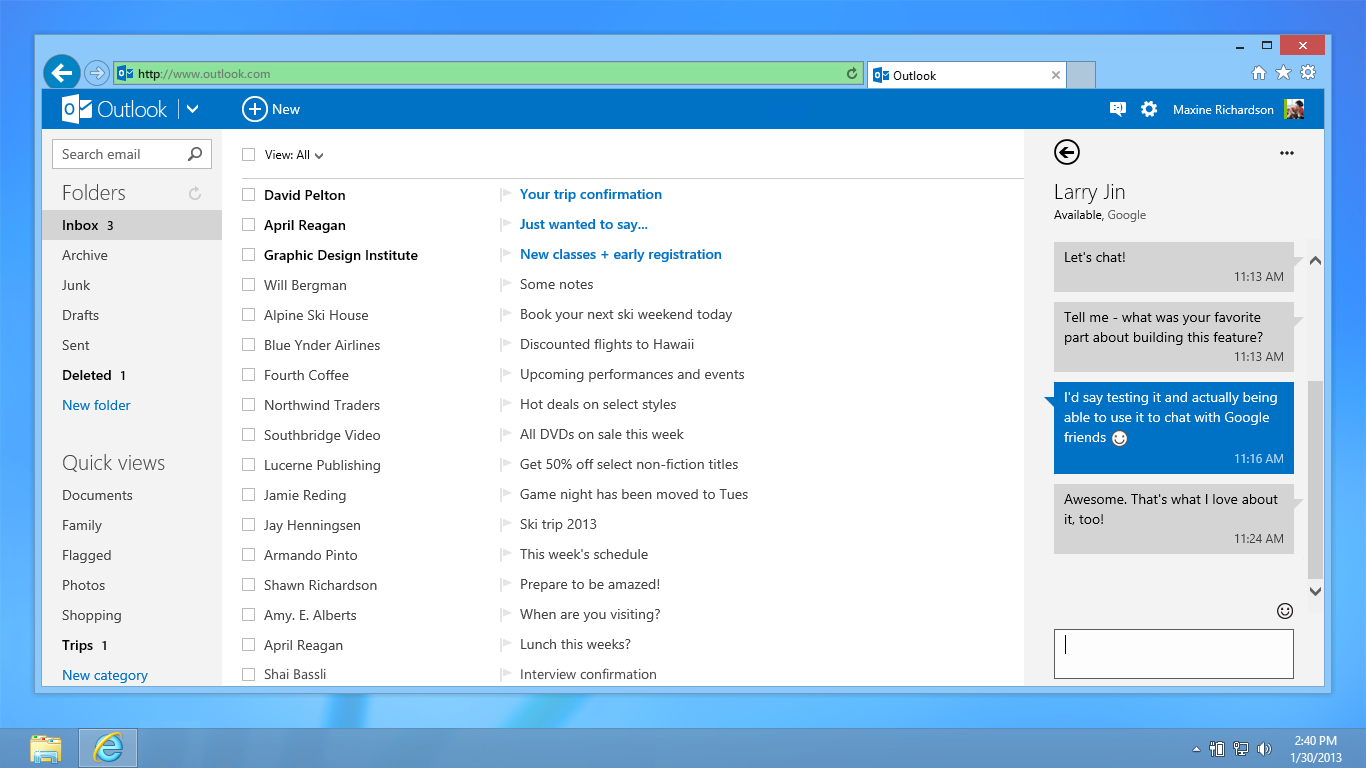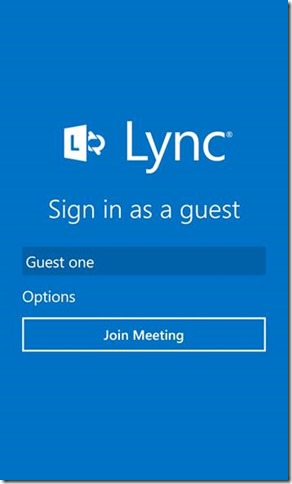
Mega graduates out of beta, gets new look
Cloud storage service Mega arrived with a bang early this year, after its controversial founder Kim Dotcom revealed that users will get a whopping 50 GB of storage at no cost. The man's involvement with the defunct Megaupload certainly piqued people's interest, with more than three million users trying or relying on the service within the first month.
More than nine months after its launch, Mega has announced, via its official blog, the end of the beta stage. The cloud storage service now touts "significant improvements and optimizations" as well as a refreshed look for the site. Let's take a look at what's new.

TeamViewer 9 Beta improves security, adds new business and user-friendly features
Today, TeamViewer announces a new beta version of its popular remote control software for Windows, Mac and Linux PCs. The latest release, named TeamViewer 9 Beta, introduces new features aimed at businesses, developers and end-users as well as security improvements.
The most noteworthy security addition in TeamViewer 9 Beta is two-factor authentication. It allows users to add an extra layer of protection to their accounts by using security codes, that can be sent to their mobile devices and, alternatively, generated by dedicated mobile apps. On Macs, TeamViewer 9 also adds the option to increase the password strength in QuickSupport.

The good and bad of Outlook.com, more than one year after its launch [Review]
In late-July 2012, Microsoft launched Outlook.com, a new consumer-oriented email service set to replace the cluttered and dated Hotmail. Its long-term mission would be to take on Google's prevalent Gmail and establish itself as a product with widespread appeal. By grandfathering-in those who used Hotmail, Microsoft announced, in early-May 2013, Outlook.com had reached 400 million users.
I delivered my review of Outlook.com two days after its launch. My impressions were positive for a product that, at the time, was still undergoing testing (the official public launch happened in late-February 2013). Still, I concluded that the service was not up to par with Gmail, because it was missing key functionality. But lots of things have changed in the meantime, which is why I decided to write this long-term review of Outlook.com, outlining the most important changes and detailing the positives and negatives of the service, now that it has reached maturity.

Bloomfire streamlines corporate knowledge sharing
We've seen a raft of tools in recent months that seek to combine business intelligence with elements of social networking. Bloomfire's USP in this field is that it seeks to capture the knowledge that already exists within an enterprise and use it to deliver improved employee engagement and ultimately better customer service.
Bloomfire has a clean interface reminiscent of Google+ and it works by dividing content into "feeds". These are designed to deliver content that’s relevant to the individual whilst filtering out noise so that people can find the information they need to do their jobs. Notifications can also be customized so that relevant notifications and tags aren't missed. The result is more time spent on the actual task and less managing the system. In any case it's designed to be used by business people rather than technicians.

BBM rakes in more than 10 million downloads during the first 24 hours
I will admit to being intrigued by BBM. I have never owned a BlackBerry smartphone (nor do I have plans to buy one) so I have never had the chance to find out what all the fuss is about. But, after the Canadian maker revealed that the service will also arrive on Android and iPhone, my interest piqued.
And I am definitely not the only one who is interested. Following the second release on rival platforms, in its first 24 hours on Apple App Store and Google Play BBM surpassed 10 million downloads, which is impressive for a service that only had 60 million users before the second half of the year.

10 reasons why you should consider Windows Phone
With Android handsets and iPhones taking the lion's share of the smartphone market, Windows Phone is quite often overlooked by most consumers in their purchasing decisions. The popularity, or lack thereof, of devices running Microsoft's mobile OS likely plays an important part but it also detracts folks from getting the smartphone that may be right for them. Ask yourselves how many of your acquaintances have been in this position.
Many do not even take Windows Phone into consideration and the ones that do easily find a couple of reasons to dismiss the platform and jump on the Android or iPhone bandwagon. Yes, Windows Phone may not be the right answer for everyone but it might be for more people than naysayers think. And I have got 10 good reasons why consumers should give Windows Phone a chance.

Taper wants to be a doorman for your inbox
I gave up on the idea of "inbox zero" a long time ago, and now simply embrace "inbox full to bursting", but Taper is offering a new approach to email management that might just make it easier to stay on top of things.
It’s on Kickstarter now, and currently a long way away from its funding goal (but with over a month still to go) so may never see the light of the day, but it’s such a crazy idea that I wanted to share it with you.

Microsoft updates Lync mobile client, no longer requires an account
Back in March of this year Microsoft released its mobile clients for Lync and Lync Server 2013 and, since that initial release, the company has twice updated the app. Today marks the third refresh for the enterprise communications tool, which is available across Windows Phone, iOS and Android (though the latter is not included in this update). This latest update brings two important new features to the platform.
First, is the ability to join and participate in a Lync Meeting without having to own a Lync account. "We’ve heard that many people want the ability to join Lync Meetings from their smartphones, even if they do not have a Lync sign-in. For example, contractors or partners may want to join your Lync Meeting while travelling or away from their PC", the team explains.

Evernote offers two-step authentication to 'everyone'
Over the course of 2013 we have seen many services adding a two-step authentication to their sign-in options, though most leave the decision of enabling it up to the individual customer. Now, the popular note-taking service Evernote, which works across both mobile and web platforms, has joined in the movement.
This is not entirely new -- the company first announced the availability back in May, but only gave the option to Premium and Business level customers, leaving the rest of the user-base without the extra security.

Facebook 5.1 for Windows Phone 8 supports more languages, adds anti-social features
My first contact with Microsoft's homebrew Facebook app for Windows Phone 8 revealed one of the least desirable social experiences that a smartphone user can have on any modern mobile platform. The first iterations of the company's offering were terrible, but luckily things started to pick up after the beta version that arrived in late-April.
Microsoft released a couple of major updates since then, bringing the Facebook experience on Windows Phone 8 to a decent level of usability. Some oversights can still be pointed out, such as the lack of a built-in security code generator but, generally speaking, all the important bits are there. And, today, Microsoft issued another update which brings the version number to 5.1. Let's take a look at what's new.

Bitrix24 delivers powerful collaboration to smaller enterprises for free
Enterprise social network and collaboration specialist Bitrix24 has released a new version of its free software for smaller businesses. The new product allows users to create, edit and collaborate on documents online, without having MS Office installed on their PCs.
Bitrix 24 has its own instant messenger for video and group chats, in addition users now have access to video conferencing and screen sharing capabilities. Email connectors allow it to work with MS Exchange, Outlook, Gmail, AOL, Yahoo!, iCloud and other popular mail services.

More than half of tech professionals would take a pay cut to work from home
Working from home is something of a luxury, but it's also not easy -- this is something I know from personal experience. I've been a home worker for around a decade now, but it does take some getting used to. Tell people that you work from home and there's usually a look of jealousy in the eyes the ones who have to stay behind at the office each evening. Home working means being able to pick your own hours, not having to deal with the daily commute, and not having to do the coffee round, but would you be happy to pay for the privilege?
We already know that most people would rather work from home than have to trudge to the office every day, but a new report from GetVoIP reveals that taking a pay cut would be an acceptable compromise for most tech professionals. A survey of 501 workers shows that 53 percent would be willing to earn a smaller pay check each month if it meant they could work from the comfort of their own home.

Microsoft trawls Google complaint forums to make Office 365 look better
Microsoft is going on the offensive trying to demonstrate that Office 365 is better than Google Apps. A series of tweets sent out via the Why Microsoft Twitter account link to articles on the Why Microsoft website in which Office is compared to Google's offering in various scenarios. This latest campaign appears to be not just an exercise in advertising Office 365, but in actively putting down Google Apps.
A series of infographics draw comparisons between using the two tools in different professions. Things kicked off with a look at the life of a sales rep but there are other scenarios including the daily activities of a teacher and Microsoft is also keen to point out how different a company it is to IBM.

Microsoft kills Skype (and consumer trust) for Windows Phone 7
When a consumer decides to buy into a platform or operating system, they expect commitment from the developer. For instance, Apple released iOS 7 on Wednesday and included support for the iPhone 4 which was released in 2010. An iPhone buyer can reasonably expect a healthy dose of updates for years. As a result, Apple users trust and buy into iOS.
Conversely, Microsoft announces that it is ending Skype development and support for Windows Phone 7. Yes, Microsoft will continue to support the smartphone operating system until September 9, 2014. However, ending support for one of its own apps is a slap in the face to the loyal users who chose to buy into the platform.

How to set up Outlook.com with IMAP in OS X Mail
Despite pitching Exchange ActiveSync as the better protocol, Microsoft has turned the lights on IMAP support for its Outlook.com consumer-oriented email service. The newly added protocol brings along with it a slew of benefits, including support from services like Unroll.me, and an improved user experience for those who connect to Outlook.com from a number of third-party clients such as the Mail app from OS X.
Setting up Outlook.com, using the IMAP protocol, in the OS X Mail app is not a straightforward process, as either the needed configuration settings are missing or the software automatically chooses POP as the unchangeable, de-facto protocol. A bit of trickery might be involved. Here is what you need to know.
